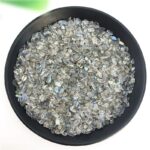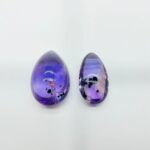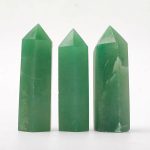Pyrite, often referred to as “fool’s gold,” has captivated civilizations for centuries with its golden luster. However, beyond its superficial resemblance to precious metals lies a multifaceted mineral with remarkable properties and potential applications.

The Golden Fool
Pyrite’s name derives from the Greek word “pyrites,” meaning “fire,” a nod to its ability to ignite sparks when struck against steel. Its composition primarily consists of iron and sulfur, giving it a metallic luster that lures unsuspecting miners into mistaking it for gold.
Physical and Chemical Properties
Pyrite exhibits a characteristic cubic crystal structure and has a Mohs hardness of 6-6.5, making it slightly harder than glass. It is opaque and exhibits a pale bronze to golden color. Pyrite is highly reactive, especially with oxygen and moisture, which can lead to tarnishing and formation of iron oxide (rust).
Occurrence
Pyrite is widely distributed throughout the Earth’s crust and is commonly found in hydrothermal veins, sedimentary rocks, and volcanic deposits. It often occurs as well-formed crystals or as disseminated grains in other rocks.
Traditional Uses
Historically, pyrite has been used for various purposes, including:
- Fire-making: Striking pyrite against steel or other materials produces sparks, which were traditionally used to ignite fires.
- Jewelry: Pyrite’s golden appearance has made it a popular gemstone, often set in jewelry.
- Medical: In ancient medicine, pyrite was believed to have healing properties and was used to treat various ailments.
Modern Applications
While pyrite may have once been a source of disappointment for gold prospectors, modern research has revealed its diverse potential. Today, pyrite is used in:
- Electronics: Pyrite is an important semiconductor material used in photovoltaic cells, transistors, and other electronic devices.
- Catalysis: Pyrite nanoparticles are employed as catalysts in chemical reactions, enhancing their efficiency and selectivity.
- Microelectronics: Pyrite’s unique optical and magnetic properties make it a promising material for microelectronics applications.
Emerging Applications
Recent advances in material science have led to the discovery of novel applications for pyrite, including:
- Energy storage: Pyrite has shown promise as a cathode material in lithium-ion batteries, offering high energy density and stability.
- Biomedicine: Pyrite nanoparticles have the potential to enhance drug delivery and imaging techniques.
- Advanced materials: Pyrite-based composites exhibit exceptional strength, hardness, and thermal conductivity, making them suitable for high-performance components.
Geochemical Significance
Besides its technological applications, pyrite plays a crucial role in geochemical cycles:
- Sulfur reservoir: Pyrite locks up significant amounts of sulfur in the Earth’s crust, regulating the global sulfur cycle.
- Paleoenvironmental indicator: The presence and abundance of pyrite in sedimentary rocks can provide insights into past environmental conditions, such as the availability of oxygen and the redox state of the water column.
- Geochronology: Pyrite can be dated using isotopic methods, providing valuable information about the timing of geological events.
Pyrite: A Material of Surprises
Pyrite’s versatility extends beyond its use in jewelry and the mistaken belief that it is gold. It is a remarkable material that continues to yield new applications and insights. From its humble beginnings as a source of disappointment, pyrite has evolved into a valuable resource for science and technology.
Tables
Table 1: Physical Properties of Pyrite
| Property | Value |
|---|---|
| Crystal system | Cubic |
| Color | Pale bronze to golden |
| Hardness | 6-6.5 Mohs |
| Cleavage | Poor |
| Fracture | Irregular |
Table 2: Chemical Composition of Pyrite
| Element | Weight% |
|---|---|
| Iron | 46.52 |
| Sulfur | 53.48 |
Table 3: Occurrence of Pyrite
| Setting | Frequency |
|---|---|
| Hydrothermal veins | Most common |
| Sedimentary rocks | Abundant |
| Volcanic deposits | Common |
Table 4: Applications of Pyrite
| Application | Category |
|---|---|
| Electronics | Industrial |
| Catalysis | Scientific |
| Jewelry | Artistic |
| Energy storage | Technological |
| Biomedicine | Medical |
| Advanced materials | Engineering |
Common Mistakes to Avoid
When working with pyrite, it is essential to be aware of the following common mistakes:
- Confusing pyrite with gold: While pyrite and gold may look similar, they have distinct properties and values. Pyrite is less dense, harder, and more brittle than gold.
- Overestimating its value: Pyrite is a common mineral and not a valuable metal. Do not fall into the trap of thinking it is worth more than it actually is.
- Neglecting safety: Pyrite can release sulfur dioxide gas when reacted with acids. Always handle it in a well-ventilated area and wear appropriate safety gear.
Step-by-Step Approach to Using Pyrite
Depending on the application, the required approach for using pyrite may vary. Here is a general step-by-step approach:
- Identify the desired application: Determine the specific application for which pyrite will be used. Different applications may require different forms or preparations of pyrite.
- Acquire the necessary materials: Obtain high-quality pyrite from reliable suppliers. Ensure that the pyrite meets the specifications for the intended purpose.
- Prepare the pyrite: If necessary, prepare the pyrite by crushing, grinding, or other appropriate methods to obtain the desired particle size, shape, or surface properties.
- Handle with care: Take appropriate safety measures when handling pyrite, such as wearing gloves and working in a well-ventilated area.
- Evaluate performance: Conduct testing and analysis to evaluate the performance of the pyrite in the targeted application.
FAQs
1. Is pyrite dangerous to handle?
Yes, pyrite can release sulfur dioxide gas when reacted with acids. Always handle it in a well-ventilated area and wear appropriate safety gear.
2. Can pyrite be used as jewelry?
Yes, pyrite is commonly used in jewelry making due to its golden appearance. However, keep in mind that it can tarnish and form rust over time.
3. What is the difference between pyrite and gold?
While similar in appearance, pyrite is harder, less dense, and more brittle than gold. Pyrite also exhibits a greenish-black streak, unlike the yellow streak of gold.
4. What is the economic value of pyrite?
Pyrite itself has little economic value. However, it is often associated with other valuable minerals, such as gold, copper, and lead, which can increase its value.
5. Is pyrite a renewable resource?
No, pyrite is a finite resource that is not renewable within human timeframes.
6. What is the future of pyrite research?
Ongoing research is exploring novel applications for pyrite in electronics, energy storage, biomedicine, and advanced materials.




























